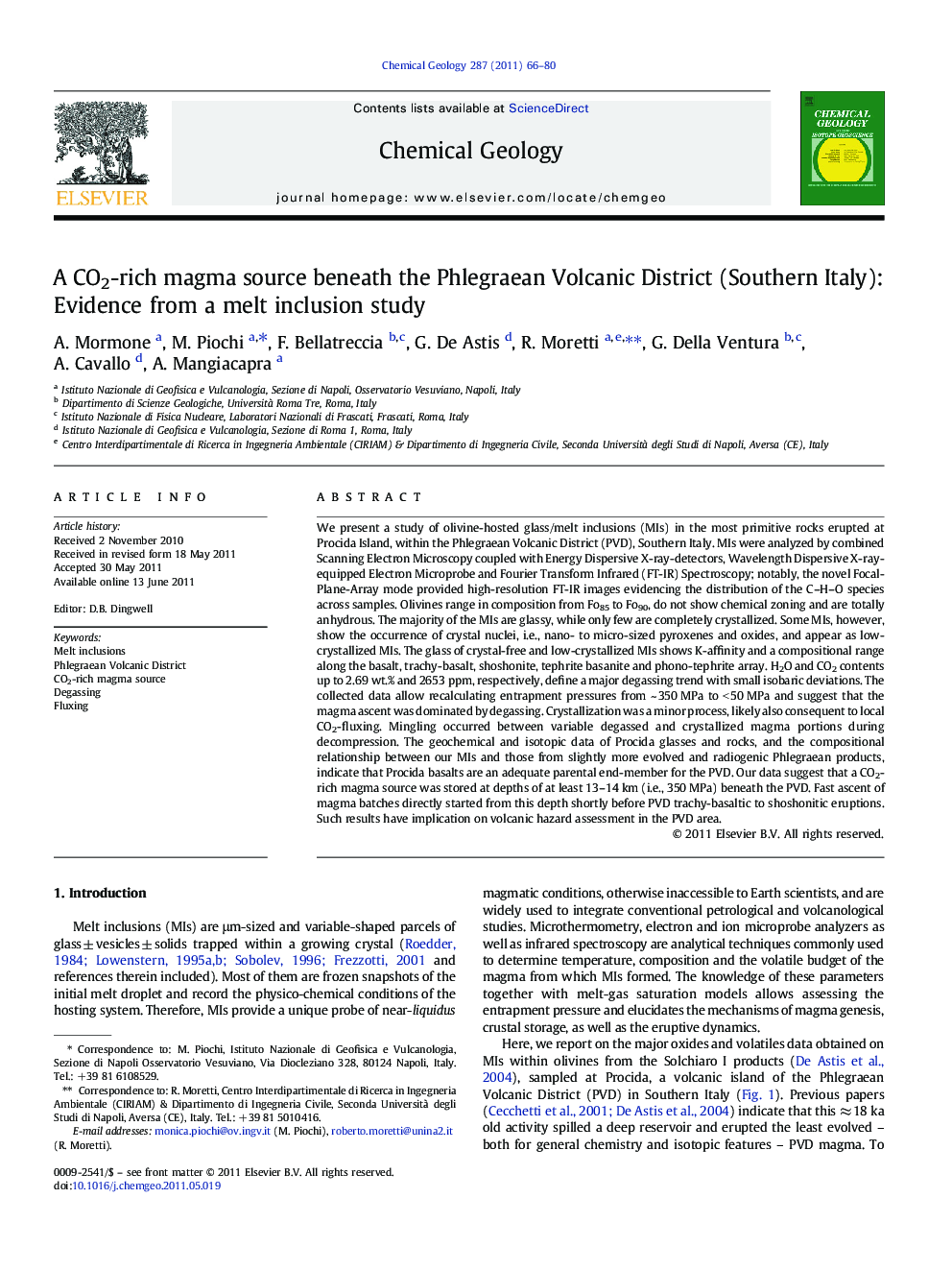| کد مقاله | کد نشریه | سال انتشار | مقاله انگلیسی | نسخه تمام متن |
|---|---|---|---|---|
| 4699704 | 1637663 | 2011 | 15 صفحه PDF | دانلود رایگان |

We present a study of olivine-hosted glass/melt inclusions (MIs) in the most primitive rocks erupted at Procida Island, within the Phlegraean Volcanic District (PVD), Southern Italy. MIs were analyzed by combined Scanning Electron Microscopy coupled with Energy Dispersive X-ray-detectors, Wavelength Dispersive X-ray-equipped Electron Microprobe and Fourier Transform Infrared (FT-IR) Spectroscopy; notably, the novel Focal-Plane-Array mode provided high-resolution FT-IR images evidencing the distribution of the C–H–O species across samples. Olivines range in composition from Fo85 to Fo90, do not show chemical zoning and are totally anhydrous. The majority of the MIs are glassy, while only few are completely crystallized. Some MIs, however, show the occurrence of crystal nuclei, i.e., nano- to micro-sized pyroxenes and oxides, and appear as low-crystallized MIs. The glass of crystal-free and low-crystallized MIs shows K-affinity and a compositional range along the basalt, trachy-basalt, shoshonite, tephrite basanite and phono-tephrite array. H2O and CO2 contents up to 2.69 wt.% and 2653 ppm, respectively, define a major degassing trend with small isobaric deviations. The collected data allow recalculating entrapment pressures from ~ 350 MPa to < 50 MPa and suggest that the magma ascent was dominated by degassing. Crystallization was a minor process, likely also consequent to local CO2-fluxing. Mingling occurred between variable degassed and crystallized magma portions during decompression. The geochemical and isotopic data of Procida glasses and rocks, and the compositional relationship between our MIs and those from slightly more evolved and radiogenic Phlegraean products, indicate that Procida basalts are an adequate parental end-member for the PVD. Our data suggest that a CO2-rich magma source was stored at depths of at least 13–14 km (i.e., 350 MPa) beneath the PVD. Fast ascent of magma batches directly started from this depth shortly before PVD trachy-basaltic to shoshonitic eruptions. Such results have implication on volcanic hazard assessment in the PVD area.
Research highlights
► The manuscript focus on olivine-hosted MIs in the Phlegraean Volcanic District (PVD).
► The MI studies are rare at the PVD, also due the paucity of mafic rocks and crystals.
► We exploited a new FT-IR-FPA technology to map H and C in the sample.
► We obtain insights into PVD magma processes at the sub-microscopic scale.
► We evidence a 13–14 km deep, CO2-rich magma source beneath the Campanian area.
Journal: Chemical Geology - Volume 287, Issues 1–2, 7 August 2011, Pages 66–80